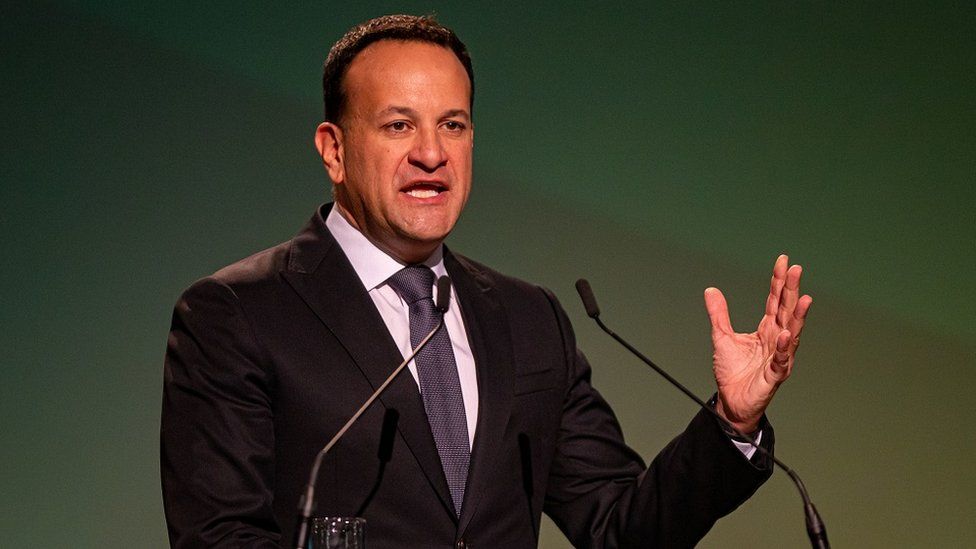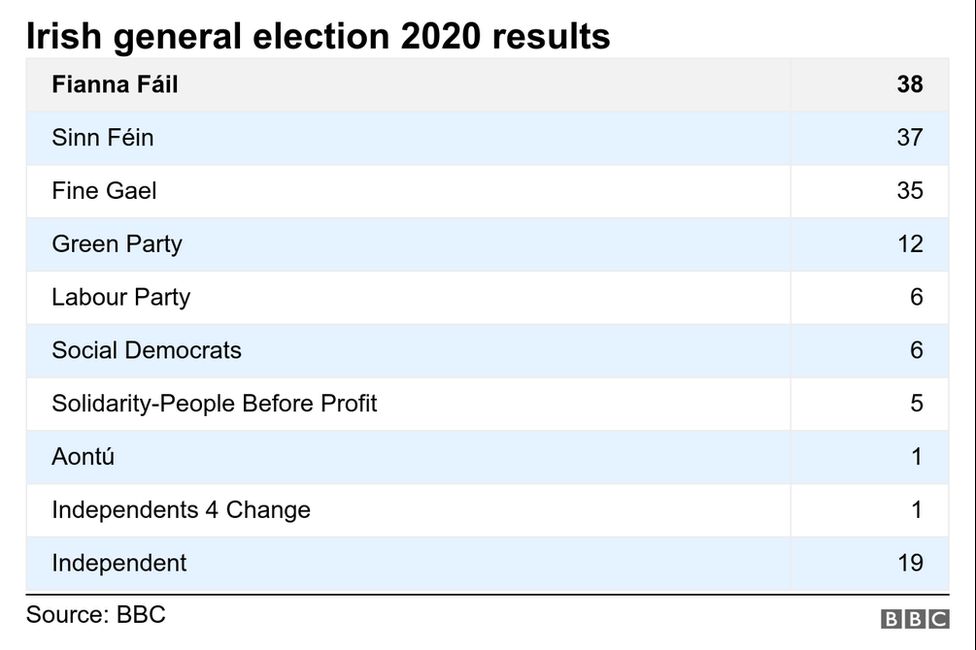Fine Gael’s Leo Varadkar is the leader under a deal with government partners Fianna Fáil.
 Image source, Getty Images
Image source, Getty ImagesIreland will have a new taoiseach (prime minister) later as Micheál Martin and Leo Varadkar swap roles.
Tánaiste (deputy prime minister) Mr Varadkar takes over from Mr Martin as government leader, while Mr Martin becomes tánaiste.
The rotation of power was laid down in the coalition agreement of June 2020.
The deal brought together Mr Varadkar’s Fine Gael party, Mr Martin’s Fianna Fáil and the Green Party in a historic compromise.
Mr Varadkar, a qualified medical doctor, previously served as taoiseach and minister of defence from 2017 to 2020.
The handover is a first for the Republic of Ireland’s political system and takes place between two parties which dominated Irish politics as bitter rivals for almost a century.
The coalition agreement originally specified that the handover would be on Thursday, 15 December but this was changed in order to allow Mr Martin to participate in the final EU leaders’ summit of the year in Brussels this week.
Mr Martin has now offered his resignation to President Higgins, automatically dissolving the government. A Dáil (Irish parliament) vote will then be held to elect the new taoiseach.
While addressing the Dáil, Mr Martin referenced Northern Ireland during his speech.
“If we genuinely believe in an Ireland which includes and serves all, then we must be prepared to build new bridges,” he said.
“We must be prepared to reach across divides and to do the hard work of learning to understand and respect each other far more than we have in the past.
“We must stop making assumptions about each other and get to know each other,” he added.
Civil War opponents
According to the Irish broadcaster RTÉ, the change at the top will be followed by a ministerial reshuffle that will include a second exchange of roles, with Minister for Finance Paschal Donohoe and Minister for Public Expenditure Michael McGrath changing places.
Other ministerial appointments will follow.


When Leo Varadkar first became taoiseach in 2017, he was seen internationally as a symbol of a new and much changed Ireland.
A gay man of Indian heritage, he was certainly a break with the past.
He takes the reins for a second time as issues over the Brexit-related Northern Ireland Protocol remain unresolved between the EU and the UK.
Unionist opposition to the protocol means no government at Stormont.

Image source, Damien Storan
And that casts a shadow over planned celebrations to mark the 25th anniversary of the Good Friday Agreement – the 1998 deal designed to end 30 years of bloody conflict in Northern Ireland.
When he meets Rishi Sunak, another prime minister of Indian heritage, resolving difficulties over the protocol will be the key priority.
Inevitably the responsibility of being in government takes the sheen off most politicians who come to power promising something new.
Domestically, Mr Varadkar and his fellow ministers in the three-party coalition will have to convince a sceptical electorate that they are delivering on housing, heath and the cost of living.
Otherwise there’s likely to be a Sinn Féin government in two-and-a-half years time with Mary Lou McDonald replacing him as taoiseach.

Mr Varadkar is also vacating his post as minister for enterprise, trade and employment.
It took four months to negotiate the coalition agreement following the February 2020 election. Under the deal, six senior ministerial posts were each allocated to Fianna Fáil and Fine Gael, and three to the Green Party.
Fine Gael and Fianna Fáil, for decades the largest parties in the Republic of Ireland, trace their origins to the opposing sides in the Irish Civil War of the early 1920s.

The 2020 election saw a rise in popularity for the left-leaning republican party, Sinn Féin, which won the most first-preference votes and ran a close second to Fianna Fáil in the number of seats taken.
Recent opinion polls have suggested that support for Sinn Féin currently stands well ahead of the coalition parties and has done for some time.
A former minister for health, Mr Martin’s time as taoiseach has been dominated by Covid, the war in Ukraine and the stand-off between the European Union and the UK over the Northern Ireland Protocol.